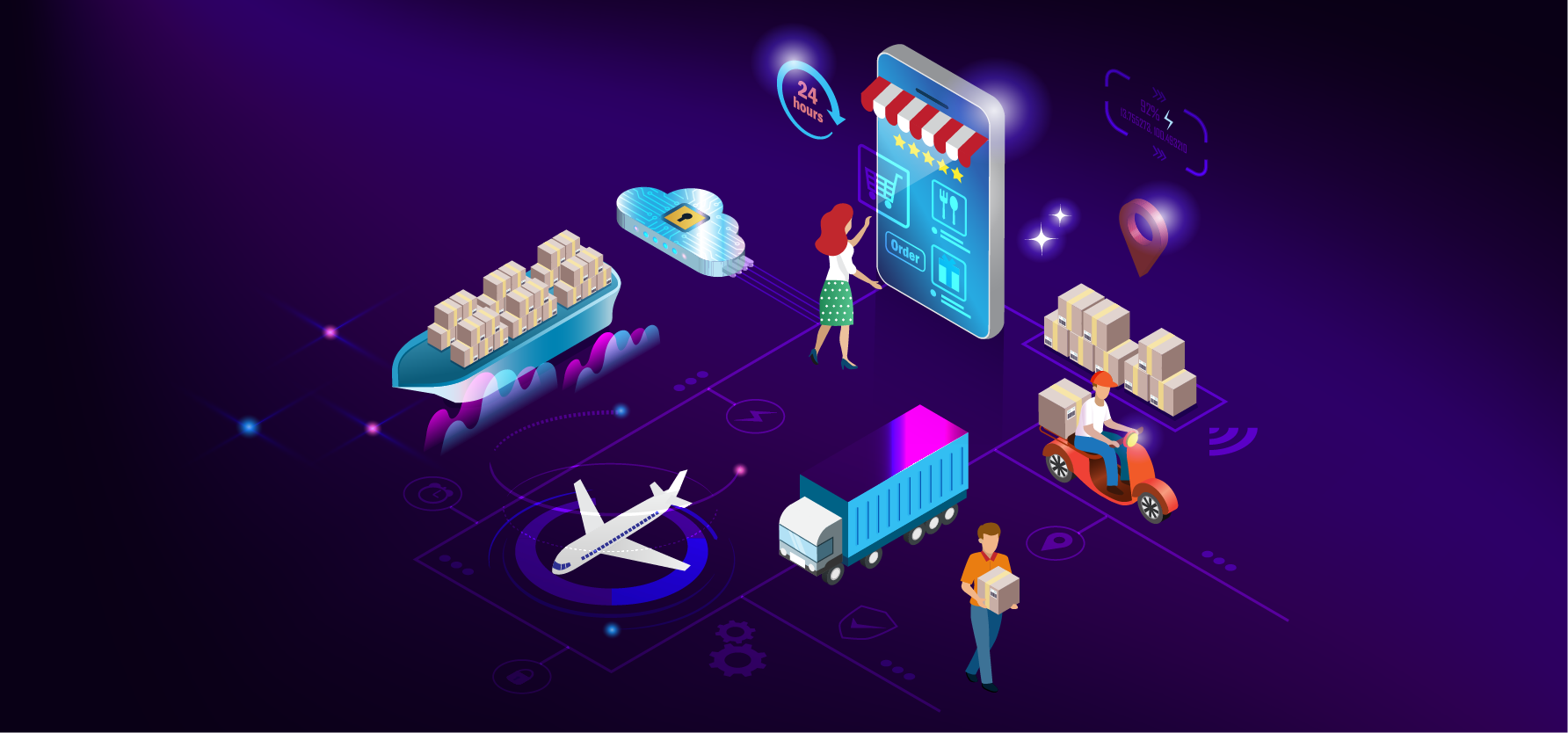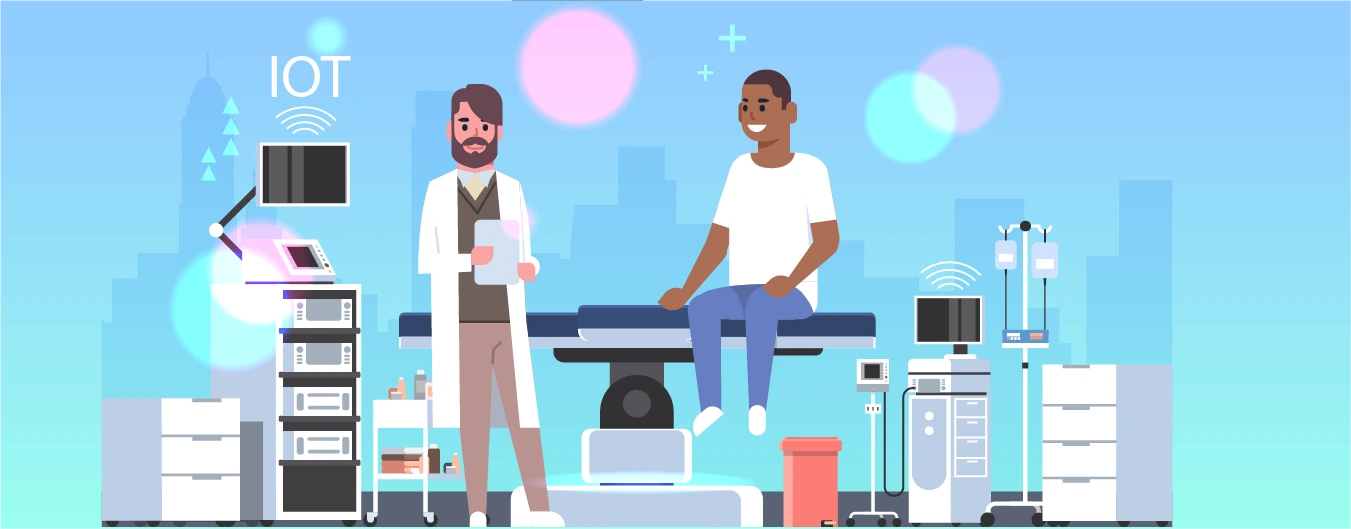
Managing the movement of goods has become more challenging as customer demands grow and markets expand. Businesses need real-time information to manage their operations efficiently.
This is where IoT in supply chain visibility becomes a game changer. With the help of smart sensors and connected devices, companies can now get real-time tracking in logistics with IoT, allowing them to monitor goods from start to finish.
This kind of end-to-end visibility on logistics using IoT helps avoid delays, reduce losses, and improve customer satisfaction. From warehouses to delivery trucks, every part of the supply chain can now be connected.
IoT applications in logistics and transport make it possible to get live updates on the location, condition, and movement of products. These smart supply chains with IoT technology help companies make faster decisions and reduce costs.
Overall, the benefits of IoT in supply chain tracking are huge. In this blog, we will learn how IoT improves supply chain management and is transforming the logistics industry.
Supply chain visibility means having the ability to track and monitor each step of a product’s journey from sourcing raw materials to manufacturing, warehousing, transportation, and final delivery to the customer.
It gives businesses full awareness of where their products are, their current condition, and the estimated time to reach the next stage. This clear view is essential for making quick, informed decisions and avoiding delays.
In the past, supply chains were often slow and inefficient due to poor communication and a lack of real-time data. Most updates were done manually or provided only after delivery. This led to missed deadlines, confusion, and unhappy customers.
Today, things have changed with IoT in Supply Chain Visibility. By using IoT-enabled sensors and devices, businesses can now enjoy real-time tracking in logistics with IoT.
This results in smart supply chains with IoT technology that are more efficient, transparent, and responsive. In short, IoT for supply chain management makes tracking easier and operations smoother, enhancing overall performance.
IoT in Supply Chain Visibility brings powerful tools that help businesses see every part of their supply chain in real time. From tracking goods to preventing equipment failure, IoT adds transparency and control. Here’s how:
Using GPS sensors, RFID tags, and smart labels, businesses can track the exact location of shipments. This real-time tracking in logistics with IoT helps reduce delays and ensures timely deliveries.
For items like food, medicine, or electronics, IoT applications in logistics and transport include sensors that monitor temperature, humidity, and shock. This ensures that sensitive products remain safe during transit.
IoT-enabled trucks and machines can alert managers about potential problems before they cause breakdowns. This reduces downtime and keeps operations going smoothly. With advanced IoT development solutions, companies can set up predictive maintenance systems that minimize costly interruptions.
Smart supply chains with IoT technology use automated shelves and robots to manage inventory, helping avoid stock-outs and reduce manual errors.
With IoT for supply chain management, data flows seamlessly between suppliers, manufacturers, and logistics teams. These IoT applications in logistics and transport secure accurate information and enable better decisions. This level of end-to-end visibility in logistics using IoT improves efficiency and trust across the supply chain.
End-to-end visibility means being able to see every part of the supply chain- from raw materials to final delivery. This kind of complete tracking is critical for building smart supply chains with IoT technology.
Thanks to IoT applications in logistics and transport, all these stages are now connected. Smart devices and sensors share data, send alerts if something goes wrong, and help teams fix issues early. This makes operations smoother, more reliable, and more transparent.
For example, imagine a cold storage truck transporting a vaccine. If the temperature rises above the safe limit, an IoT development solution detects it instantly and sends an alert. The driver or operations team can act right away, avoiding loss, delays, or health risks.
End-to-End Visibility in Logistics includes:
IoT in Supply Chain Visibility helps companies monitor every stage of product movement. Real-time tracking in logistics with IoT allows businesses to respond faster to delays. IoT applications in logistics and transport enhance coordination and reduce manual errors.
With IoT-enabled GPS and RFID sensors, businesses can monitor shipments minute by minute. It means no more guessing where a container is; companies can see exact locations and conditions, enhance transparency, and improve delivery accuracy.
IoT sensors on transport vehicles or machinery can detect wear and tear before a breakdown occurs. This reduces downtime, avoids costly delays, and extends the lifespan of equipment.
Smart shelves and warehouse sensors help track inventory levels in real time. IoT solutions can automatically notify managers when stock is low or when items are misplaced, reducing overstocking and out-of-stock scenarios.
For temperature-sensitive goods like food, vaccines, or chemicals, IoT sensors can continuously monitor conditions such as humidity, temperature, and light exposure, sending alerts when thresholds are breached.
IoT enables the automation of routine tasks, such as scanning packages or updating ERP systems. It also provides faster incident response by alerting teams the moment an issue is detected.
IoT applications in logistics and transport are helping companies move goods faster, safer, and with fewer mistakes. Smart devices and sensors make it easy to track everything in real time.
Here are some common ways IoT in Supply Chain Visibility is used:
Fleet Management: IoT devices in trucks check speed, fuel use, driver habits, and when the vehicle needs service. This helps companies keep their vehicles in good shape. With IoT development solutions, managers get live updates and can make quick decisions.
Inventory Tracking: With sensors and tags, businesses get real-time tracking in logistics with IoT. They can see where products are and if they are safe. It avoids running out of stock or ordering too much.
Cold Chain Monitoring: For goods such as food or medicine, IoT applications in logistics and transport help keep the right temperature. If it gets too hot or cold, the system sends an alert.
Last-Mile Delivery: IoT helps plan the best delivery routes. It uses maps, traffic, and customer locations to make sure items arrive on time.
Asset Management: IoT in supply chain management tracks containers, tools, and pallets. This helps prevent loss and saves money.
While the benefits are huge, companies may face some challenges when adopting IoT for supply chain management:
The future of supply chains is driven by digital technology, and IoT plays a key role in this transformation. New trends are making logistics smarter, safer, and more efficient.
AI + IoT (AIoT): By combining Artificial Intelligence with IoT devices, companies can predict problems before they happen and automate many tasks. This means faster decisions and fewer errors.
Blockchain + IoT: Blockchain technology secures supply chain data, making it trustworthy and hard to tamper with. When combined with IoT, it ensures all information about products is safe and transparent.
5G Connectivity: It is also changing the game by enabling faster and more reliable data sharing between devices. This helps supply chains respond quickly to changes and stay connected everywhere.
Telepathy Infotech offers expert IoT development solutions designed to transform supply chain operations. By leveraging the power of IoT in Supply Chain Visibility, they help businesses gain full control and real-time insights across every stage of their supply chain.
Their custom IoT systems connect all key points from raw material sourcing and production to warehouse management and transportation, enabling end-to-end visibility in logistics using IoT. This integration provides businesses with accurate, up-to-date information that supports better decision-making and reduces delays.
Telepathy solutions include smart sensors and devices that enable real-time tracking in logistics with IoT, ensuring constant monitoring of goods and assets. For sensitive products like food or medicine, they implement IoT applications in logistics and transport, such as temperature and humidity monitoring, to maintain quality and safety.
Additionally, their IoT platforms offer predictive analytics and alert systems to identify potential issues early, minimizing downtime and losses. They also facilitate seamless data sharing and collaboration between suppliers, manufacturers, and logistics providers, streamlining operations.
With scalable and future-ready IoT solutions, Telepathy Infotech helps businesses build smart supply chains with IoT technology that is efficient, reliable, and competitive in today’s fast-paced market.
IoT is revolutionizing supply chain management by making it more visible, responsive, and efficient. From real-time tracking to predictive insights, IoT offers tools that help businesses meet customer demands faster and more reliably.
As technologies like AI and 5G further enhance IoT capabilities, the future of supply chains looks smarter and more connected than ever. Companies will gain deeper insights, automate complex processes, and reduce costs while improving quality.
This digital transformation ensures supply chains are agile, resilient, and ready to adapt to changing market needs, giving businesses a strong competitive edge.
Technical Content Writer
Kavita has a strong background in technology and writes about cybersecurity, software development, and digital marketing. She makes complex topics simple and easy to understand. Her content helps businesses, developers, and marketers learn about cybersecurity threats, best practices, software development, and digital strategies to stay informed and succeed online.



